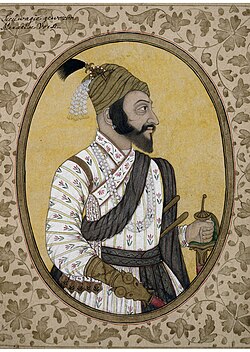This article may need to be rewritten to comply with Wikipedia's quality standards.(May 2024) |

Chhatrapati is a royal title from Sanskrit used to denote a king. The word "Chhatrapati" is a Sanskrit language compound word of chhatra ( parasol or umbrella ) and pati (master/lord/ruler). [1] This title was used by the House of Bhonsle, between 1674 and 1818, as the heads of state of the Maratha Empire and later by the states of Satara and Kolhapur.